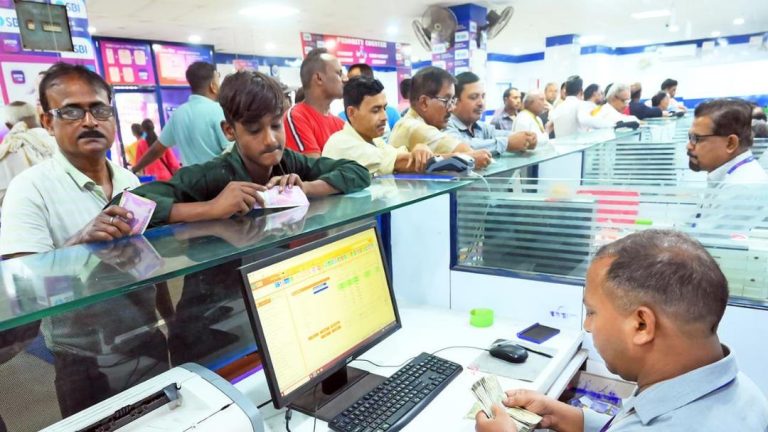
What’s Holding Indian Films Back on the Global Stage?
The Indian film industry, also known as Bollywood, is a behemoth of cinematic production, churning out over 1,000 films annually. With a rich storytelling tradition and booming regional markets, one would expect Indian films to be a dominant force globally. However, despite its massive size and success at home, Indian cinema continues to struggle to make a significant impact on the international stage.
In a recent interview, Jyoti Deshpande, Executive Director of Reliance Industries, shed light on the key hurdles holding Indian films back. According to her, fragmented distribution, screen shortages, and outdated production systems are the primary obstacles. In this blog post, we’ll delve into the challenges facing Indian cinema and explore potential solutions to help Indian films compete globally.
Fragmented Distribution
One of the primary issues plaguing Indian films is the fragmented distribution system. With multiple distributors, producers, and exhibitors involved, the process of releasing a film can be tedious and inefficient. This leads to delays, inconsistent marketing, and a lack of coordination, ultimately affecting the film’s performance.
In contrast, international films often have a centralized distribution system, allowing for a more streamlined and targeted approach. To overcome this hurdle, Indian filmmakers need to develop a more cohesive distribution strategy, involving a single point of contact and a unified marketing effort.
Screen Shortages
Another significant challenge is the shortage of screens, particularly in smaller towns and cities. With a limited number of screens, Indian films struggle to get a wide release, making it difficult to reach a broader audience.
To address this issue, the Indian government has taken steps to increase the number of screens, particularly in rural areas. Additionally, regional multiplex chains and single-screen cinemas are expanding, offering more opportunities for Indian films to be exhibited.
Outdated Production Systems
Indian films often rely on outdated production systems, which can lead to high production costs, limited special effects, and a lack of global appeal. To compete with international films, Indian filmmakers need to invest in modern technology, such as CGI, 3D animation, and high-quality sound design.
Moreover, Indian films often prioritize quantity over quality, churning out multiple films per year to cater to the vast domestic market. This approach can lead to a lack of consistency and a decline in overall quality. To overcome this hurdle, Indian filmmakers need to focus on producing fewer, high-quality films that can compete globally.
A Shift from Volume to Quality
To compete globally, Indian films need to shift their focus from quantity to quality. This means investing in better storytelling, cinematography, editing, and sound design. By producing fewer, high-quality films, Indian filmmakers can create a more cohesive and consistent brand, appealing to a broader global audience.
Greater IP Control
Another crucial aspect is greater control over intellectual property (IP). Indian films often struggle to retain control over their content, particularly when it comes to music and soundtracks. To overcome this hurdle, Indian filmmakers need to negotiate better deals with music labels and streaming platforms, ensuring they retain rights to their intellectual property.
Smarter Tech Use
Technology can play a vital role in helping Indian films compete globally. By leveraging social media, online platforms, and targeted marketing, Indian filmmakers can reach a broader audience and create a more global buzz around their films.
Moreover, Indian films can benefit from the use of virtual reality (VR) and augmented reality (AR) technology to enhance the viewing experience and create immersive storytelling. By embracing these technologies, Indian filmmakers can differentiate themselves from international films and offer a unique cinematic experience.
Structural Changes Remain Urgent
While a shift from volume to quality, greater IP control, and smarter tech use are all crucial steps in helping Indian films compete globally, structural changes remain urgent. The Indian government needs to address the issues of fragmented distribution, screen shortages, and outdated production systems by implementing policies that support the growth and development of the Indian film industry.
Additionally, the industry needs to come together to develop a more cohesive and collaborative approach to filmmaking, sharing resources, expertise, and best practices to create a more competitive and sustainable industry.
Conclusion
In conclusion, Indian films face numerous challenges in competing globally, including fragmented distribution, screen shortages, and outdated production systems. To overcome these hurdles, Indian filmmakers need to shift their focus from quantity to quality, prioritize greater IP control, and leverage smarter technology. Moreover, structural changes are necessary to address the underlying issues plaguing the industry.
By working together and embracing these changes, Indian films can finally break through the barriers and make a significant impact on the global stage.
Source: https://youtu.be/rqoYXYNVGss



